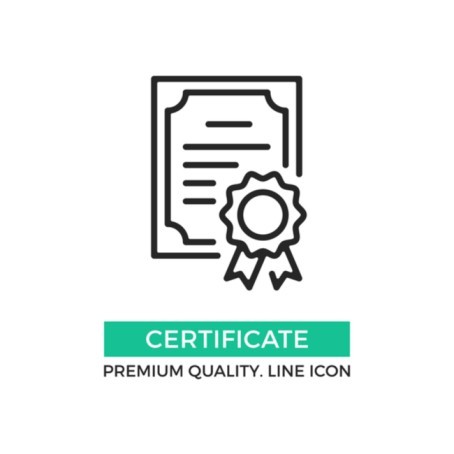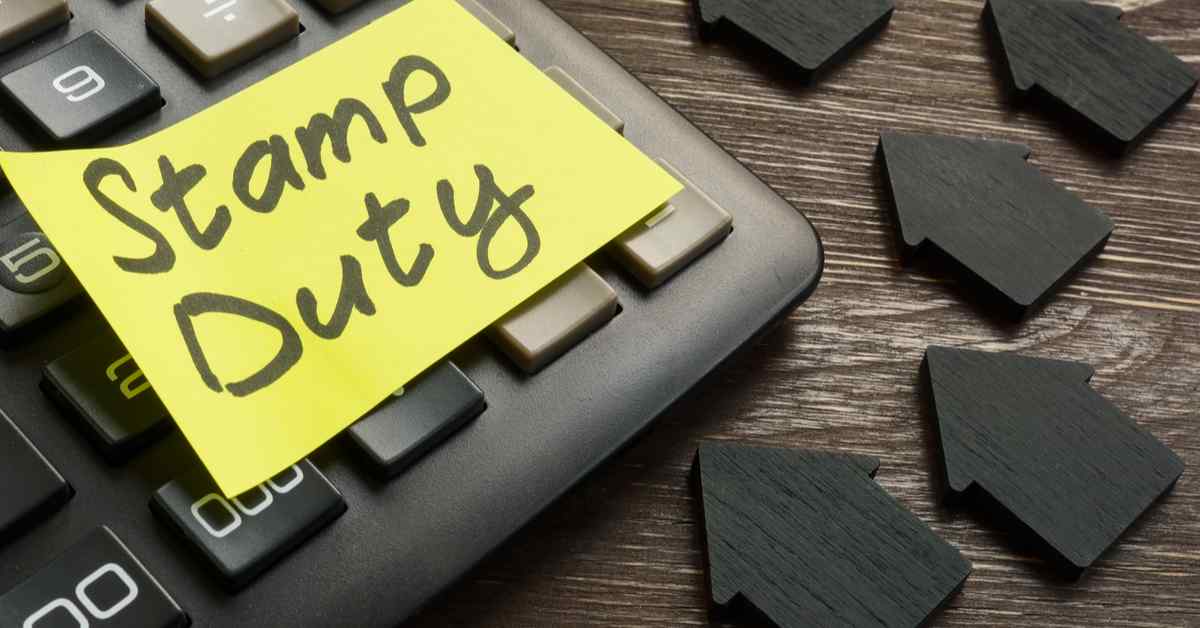Table of Contents
Quality Service Guarantee Or Painting Free

Get a rental agreement with doorstep delivery

Find the BEST deals and get unbelievable DISCOUNTS directly from builders!

5-Star rated painters, premium paints and services at the BEST PRICES!
Loved what you read? Share it with others!


Submit the Form to Unlock the Best Deals Today
Help us assist you better
Check Your Eligibility Instantly

Experience The NoBrokerHood Difference!
Set up a demo for the entire community
Encumbrance Certificate: Types, Documents Required and Uses
Table of Contents
Hello there! Are you looking towards purchasing a property? Well, of course, you would not want to invest your money in a property to, later on, find out all the legal and financial crises that property has brought along in your life. Properties that you are willing to buy may have a loan on them or have been registered against individual loans with the banks. You might end up in legalities if you purchase a property, without checking for these issues. And, of course, we know how tedious it is to get tied up in such scenarios. To avoid such a case, you are looking for the encumbrance certificate of the property.
You might also need an Encumbrance Certificate if you want to get involved with loans and banks. Whether you want your bank to pay a loan for you to buy a particular property, or if you wish your bank to sanction your loan against your existing property, you still need this document. But, don't worry; we are here to tell you all you need to know about the encumbrance certificate to wipe that blank look off your face.
What is an Encumbrance Certificate?

If you wish to know whether the property is free from any financial and legal issues, all you need to do is find out about that property's encumbrance certification. An encumbrance certificate means a legally issued paper or document of a property which states that it is under no financial and legal liabilities. Apart from this, it also shows you the property status and the total number and details of its past owners. It also states the transfer of ownership in the past times and all the mortgage bindings of the property. Properties against which the mortgage isn't completed, cannot obtain the EC. Apart from this, an EC is a required document if you are looking forward to applying loan to buy that property, or if you want to use the loan on your existing property. It is also viewed in the panchayat office if the property owner has not paid land tax to the government in the past three years.
Quality Service Guarantee Or Painting Free

Get a rental agreement with doorstep delivery

Find the BEST deals and get unbelievable DISCOUNTS directly from builders!

5-Star rated painters, premium paints and services at the BEST PRICES!
Why is an Encumbrance Certificate Required?
An Encumbrance Certificate (EC) is a crucial document used as evidence of free title/possession of a property. The document is needed while purchasing or selling a property or when applying for a home loan or loan against property to confirm that the particular property is free of any economic or legal liabilities.
Types of Encumbrance Certificates
There are many types of encumbrances, but four of the most common are easements, deed restrictions, encroachments, and liens.
1. Lien
A lien is the most common type of encumbrance, and it can be placed on a property to receive a financial obligation from the homeowner, i.e., a mortgage. The lien remains on the property until the mortgage is fully paid. It can also include tax liens for unpaid taxes.
Additionally, a contractor can obtain a lien when they have not received payment for repairs done to the property. If the lien is not satisfied, it can lead to the foreclosure of the house, with the proceeds of the sale going toward the payment of the owner’s debts.
2. Deed Restriction
A deed restriction places a restriction on what can be done to the property. It is also known as a restrictive covenant. The restriction can be anything from banning placing a satellite on the roof to designating where cars can be parked. It can also limit the construction of anything on the land.
Deed restrictions help create a standard for what the property can be used for and are often used to protect the value of the property. The restrictions are usually placed on properties with historical significance.
3. Easement
An easement gives a person or entity the right to use the property even though they don’t own it. For example, a utility company might obtain an easement to place power grids on a farmer’s property. A common easement is one that allows the owner of an adjacent property to use the driveway of another property for access.
Another common easement is one that exists when a common walkway to the beach cuts through one owner’s property. The easement is on the land, not the property itself.
4. Encroachment
An encroachment exists when a section of one property extends over to an adjacent property. This can include, for example, a fence that is built along with the adjacent property or a tree branch that hangs over a neighbouring property. Usually, the property owner encroached upon will want the encroachment to be removed, as an encroachment often makes it harder to transfer their property title to a new owner.
How to Apply for an Encumbrance Certificate

Much like applying for most other official documents, there are two ways to apply for an Encumbrance Certificate also. The two ways are offline and online.
How to Apply for an Encumbrance Certificate Offline
If you wish to apply for an Encumbrance Certificate offline, then you can do it easily with application number 22 in the chambers of a sub-registrar. Most states follow this method and work with handwritten documents. While applying for this document, the applicant also needs to provide all his or her self-attested copies of their records, such as the address proof, papers of the property, registration papers, etc. You also need to attach all the relevant documents required of the property, in terms of any exchange or deed. The property registration papers of the property are to be attached.
Also, you should know that the processing fee to apply for an encumbrance certificate varies from state to state. It would be best if you also remembered that it is only valid for a specific time and needs to be revised and updated every few years, as its tenure gets over while you apply for an Encumbrance Certificate. If you have missed over updating your property's EC or are now making an EC of your property, you would first be needed to avail the NEC, Nil Encumbrance Certificate. Nil Encumbrance Certificate is a document stating your property's position in the gap period between two Encumbrance Certificates.
What are the uses of an Encumbrance Certificate?
The following circumstances, in general, necessitate the use of an encumbrance certificate:
EC for purchase: A non-encumbrance certificate is necessary when purchasing a home to demonstrate that you are dealing with the correct party and that the property is free and clear of all liens.
EC for sale: If an individual chooses to sell their property, they are required to show the encumbrance certificate along with all other relevant documents to the potential buyer. To obtain the certificate, the seller must apply for it and get it from the government's files.
Use EC for property mutation: After purchasing the property, the owner must use property mutation to officially document the ownership transfer.
Encumbrance certificate for loans: Before approving your application for a home loan to buy a home, banks frequently require an encumbrance certificate.
EC for the elimination of PF: Your employer will request the EC if you utilise your provident fund to put a down payment on a home.
What is the Process to Apply for Encumbrance Certificate Online?
If you prefer the convenience of applying for an EC online you can do so only in the following states as of now –
- Gujarat
- Andhra Pradesh
- Telangana
- Karnataka
- Tamil Nadu
- Puducherry
- Kerala
- Odisha
If you’re applying for an Encumbrance Certificate in any of these states, then you will need to start the application process by going to the respective state website first. For example, we will show you the process of applying for an EC online in Karnataka.
- Visit - https://kaverionline.karnataka.gov.in
- Create an account or by clicking on ‘Register as New User’
- Fill in the registration form and submit it by clicking on ‘Register’
- Use the activation code to log in (this will be sent to your email address and mobile number) and click ‘Activate’
- Login and change the password
- Click on the ‘Services’ tab and select ‘Online EC’
- Select the property registration year (details post-2003 only are available)
- Fill in the required property details and when you have checked it and it is correct, click on ‘Send OTP to View Document’
- When you receive the OTP enter the same and then view the document or download it.
This Encumbrance Certificate is not attested and is hence free. If you require an attested copy then you will need to click on ‘Check to apply for digitally signed EC’ and click on ‘View Document’. A PDF document will open, at the bottom of this document you will find a tab saying ‘Proceed’. Click on it and download it, after this, you will have to make the required payment. After successful payment you will get a payment receipt, then you must click on ‘Refresh Payment Status’. Post this, your EC online application can be found in the ‘Pending/Saved Application’ section. Once the request has been received by the right authorities, it will be digitally signed.
How to Check the Status of an Encumbrance Certificate?

In most Indian states, application for an Encumbrance Certificate has been taken over to EC online means by the state government websites. Applicants can easily log in on the state website and check the status of their property's Encumbrance Certificate Status, without any hassles. It takes a maximum of thirty days typically to get approved. Once it has been approved, it can be easily downloaded from the site. However, suppose it has exceeded the duration. In that case, you can quickly contact them for help via the number provided on the website or write an application to them over mail with the mail address provided.
Documents Required for Obtaining Encumbrance Certificate
- Application form
- Attested copy of address proof
- A photocopy of any previously executed deed of the said property such as sale deeds, gift deeds, partition deeds, release deeds, etc.
- Details about the property and its title details
- The registered deed number, date, book number, volume/ CD number, and signature of the applicant should be affixed with it.
- Period for which the EC is required
- The purpose for which the EC is applied for
- Copy of Power of Attorney, in case of application, is made by the attorney holder
- Aadhar card
- Property card if available
Updating an Encumbrance Certificate: A Guide for Indian Homebuyers
Encumbrance Certificate (EC) is an important document that proves the ownership of a property and its clear title. It is a must-have document for homebuyers looking to purchase a property, as it serves as evidence of the property's transaction history and the absence of any legal liabilities or claims against the property. But what if you need to update your EC? Here's a step-by-step guide on how to update an EC in India.
An EC is usually valid for a period of 30 years and must be updated regularly to ensure that it reflects the current status of the property. Updating an EC is a straightforward process that involves obtaining a new certificate from the relevant authority and updating the property's transaction history.
Here are a few things to keep in mind while updating your EC:
- Verify the ownership of the property
- Ensure that all taxes and other liabilities have been paid
- Check for any ongoing legal disputes
- Get the latest copy of the EC
- Update the transaction history of the property
Get Your EC Up-to-date in a Jiffy with These Simple Steps
Updating your EC is a breeze when you follow these simple steps:
- Verify the Ownership of the Property
Check the latest property deed
Obtain a No Objection Certificate (NOC) from the current owner
- Check for Any Liabilities
Ensure that all taxes and other liabilities have been paid
Get a receipt for the same
- Check for Any Legal Disputes
Verify if there are any ongoing legal disputes related to the property
- Get the Latest EC
Visit the relevant authority's website (e.g., Karnataka, Bangalore Development Authority, etc.)
Download the EC application form
Fill in the required details
Submit the form along with the necessary documents (property deed, NOC, receipts, etc.)
- Update the Transaction History of the Property
Once the EC has been updated, ensure that the transaction history of the property reflects the latest information
Make the EC Updating Process a Breeze
Here's a handy table to help you keep track of what you need to do while updating your EC:
| STEP | TASK | DOCUMENTS REQUIRED |
| 1 | Verify Ownership | Property Deed, NOC |
| 2 | Check for Liabilities | Receipts for Taxes and Other Liabilities |
| 3 | Check for Legal Disputes | Information on Ongoing Legal Disputes |
| 4 | Get the Latest EC | EC Application Form, Filled in with Required Details |
| 5 | Update Transaction History | Updated EC Reflecting the Latest Information |
- Verify the ownership of the property
- Check the latest property deed
- Obtain a No Objection Certificate (NOC) from the current owner
- Check for any liabilities
- Ensure that all taxes and other liabilities have been paid
- Get a receipt for the same
- Check for any legal disputes
- Verify if there are any ongoing legal disputes related to the property
- Get the latest EC
- Visit the relevant authority's website (e.g., Karnataka, Bangalore Development Authority, etc.)
- Download the EC application form
- Fill in the required details- Submit the form along with the necessary documents (property deed, NOC, receipts, etc.)
- Update the transaction history of the property- Once the EC has been updated, ensure that the transaction history of the property reflects the latest information
Updating an Encumbrance Certificate (EC) is an important task for homeowners and buyers in India, as it helps ensure that the property's title is clear and free from any legal liabilities or claims. With the help of this guide, updating your EC has never been easier!
But what if you need professional help with the EC updating process? That's where NoBroker comes in! Our legal services team can help you navigate the complexities of the EC updating process and ensure that your property has a clear title. Get in touch with us today to learn more!
Difference Between Encumbrance Certificate, Completion Certificate and Occupancy Certificate
Purchasing a property is stressful, and the different legal documents usually cause buyers to get perplexed. The distinction between Encumbrance Certificate, Completion Certificate, and Occupancy Certificate is the one that people most frequently get wrong. For clarification on the crucial differences between the 3, see the following:
Encumbrance Certificate (EC): A legal document that certifies a piece of property is unencumbered by debts or obligations is known as an encumbrance certificate.
Completion Certificate (CC): A completion certificate, which is a legal document, is issued when a building is finished in accordance with the building plan and other specifications.
Occupancy Certificate (OC): A legal document that certifies the building is now secure to enter is called an occupancy certificate. It is issued after receiving the CC.
How to Download the EC Online?

All you need to check for this is to log in to the website. Then, you need to go to the section of the Encumbrance Certificate and enter your credentials. Once the status of your Encumbrance Certificate has been approved on the state website, you can easily download the document in the form of a printable pdf, on your device, and attach its printed copy with the records of your property. You might need to wait over fifteen to thirty days, as it takes this much time for your property's EC status to be approved.
You have already learned all you need to know about the encumbrance certificate. A paper issued by the Registrar states that your property has no liability in terms of legal and financial issues. It can be easily applied online as well and EC online takes about fifteen to thirty days to get approved. You can quickly check for the status of your application on the website itself. Not only this, but you can also download EC online onto your device very easily. It is essential to check for this certificate if you are planning to invest in a property. It not only tells you the legal and financial position of a property, but it also means you the history of ownership of the property. You might want to look at that as well.
There is so much an Encumbrance Certificate can tell you about a property. Why wait now? Happy Investing! Looking to buy or sell a property? It's time to trust the experts at NoBroker! Get an expert legal team to go over all your documents so that you don't invest in a property that has legal issues. This could cost you plenty of time and money. Be smart and get the right team to help you with the whole process. Click the link below.

FAQ's
Ans. EC is known as an Encumbrance Certificate, and OC is an Occupational Certificate. An OC states that the certificate or a document, declaring the occupational activity of the property. If any property holds an OC, it can be used in various means such as residential, commercial, etc. It states the accommodation activity of the property, and its safety to use. An Occupational Certificate cannot be obtained for properties that are under construction or not cleared by government agencies.
Ans. An EC is the Encumbrance Certificate, and a CC is a Completion Certificate. A completion certificate is a document which is issued by the municipal corporation of the area, in which the property is situated. Having a Completion Certificate means that the property is now constructed entirely, following all the guidelines of the municipal and the initial plan or blueprint of the property has been observed. A completion certificate doesn't make the property fit to be used by people. It means that the construction of the property is completed as per the guidelines laid.
Ans. The states which are currently issuing the EC online are Gujarat, Andhra Pradesh, Telangana, Karnataka, Tamil Nadu, Puducherry, Kerala, and Odisha. While the other states are actively working on speedily beginning the online services for the application of an Encumbrance Certificate, they are actively accepting the handwritten and signed copy by Registrar as a valid EC.
Ans. The charges to issue an encumbrance certificate depend on the number of years you publish the certificate. It usually ranges between two hundred rupees to five hundred rupees. Different states also have additional charges and different processing fees.
Ans. An EC is a document that ensures that your property is free from any financial and legal issues. It is generally asked for, during the sale or purchase of a property. It is also needed to demand a loan to purchase the property or to ask for a loan against the property.
Ans. If you are getting an encumbrance certificate offline, you will need to go to the Sub-Registrar’s Office. They are the authority in charge of issuing encumbrance certificates.
Ans. To apply for an encumbrance certificate you will need -
• Application form
• Address proof (attested)
• Property and title deed details
• The last or latest deed of the property (sale deeds, gift deeds, partition deeds, release deeds, etc.)
• The time period for which the EC is required
• The reason for applying for an EC
• Aadhar card
• Property card if available
Ans. There are two types of encumbrance certificates available –
Form 15: If your property has encumbrances during the time period that you have asked for the certificate.
Form 16: If your property has no encumbrances during the period for which you have requested in the certificate.
Ans. If all the details that you have provided are correct, you could get an encumbrance certificate in about 2-3 working days.
Ans. The maximum time period for which you can ask for an Encumbrance Certificate is for a period of 30 years.
Recommended Reading

E-Swathu Karnataka: Revolutionizing Land Ownership Documentation
December 30, 2024
5945+ views

Completion Certificate: The Assurance of Your Property’s Legal Status
December 27, 2024
11640+ views

Understanding Society Share Certificates in India: A Comprehensive Guide
December 26, 2024
6145+ views

Ensure The Smooth Transfer of Properties by Obtaining Your Tamil Nadu Varisu Certificate
December 19, 2024
5783+ views

Everything You Need to Know About NOCs for Property Transfer in India
December 19, 2024
13038+ views
Loved what you read? Share it with others!
Most Viewed Articles

Franking Charges Explained: Meaning and Benefits
August 24, 2023
1003023+ views

Supreme Court Verdict on Society Maintenance Charges
December 17, 2024
56450+ views

December 26, 2024
45143+ views

Stamp Duty and Registration Charges in Bangalore in 2025
December 17, 2024
41617+ views

All You Need to Know about Revenue Stamps
December 17, 2024
41141+ views
Recent blogs in
Everything You Need to Know About the Ready Reckoner Rate in Pune
December 30, 2024 by Vivek Mishra
RERA Complaints: Safeguarding Your Real Estate Interests in 2025
December 30, 2024 by Kruthi
PCMC Property Tax Online: Download E-Receipt, Name Change, Rebate and More
December 30, 2024 by Vivek Mishra
A Comprehensive Guide to E Stamp and E Stamping Process
December 30, 2024 by Kiran K S
FSI in Chennai: A Comprehensive Guide to Regulations and Calculations
December 30, 2024 by Vivek Mishra




Join the conversation!